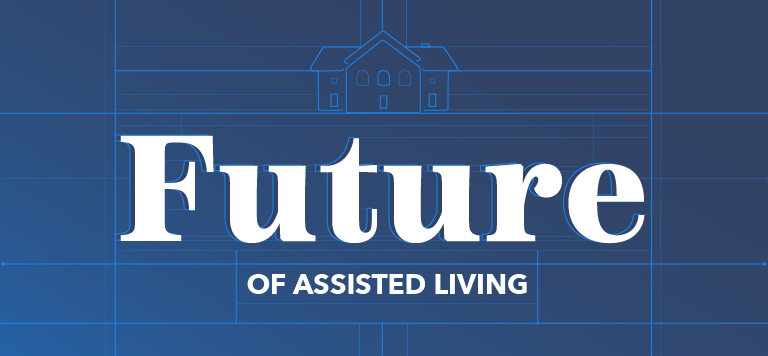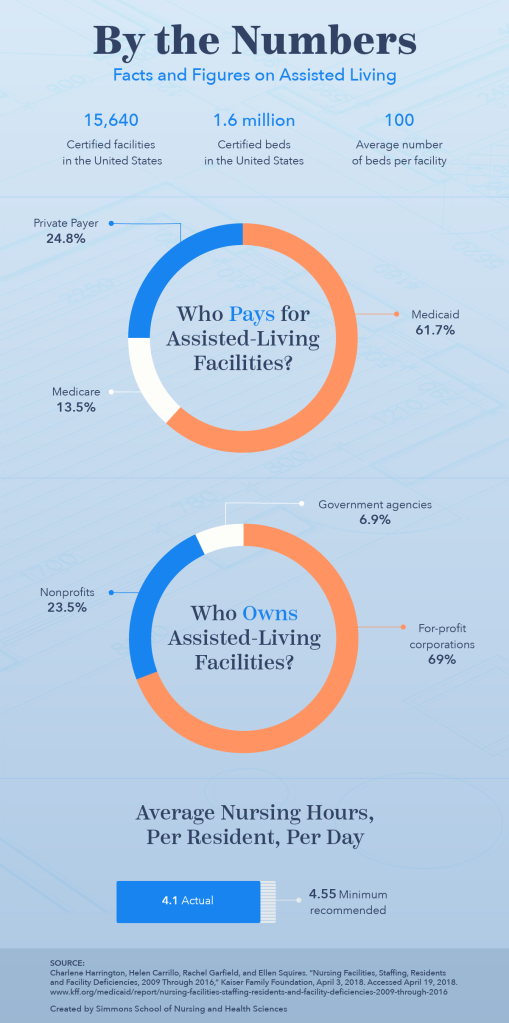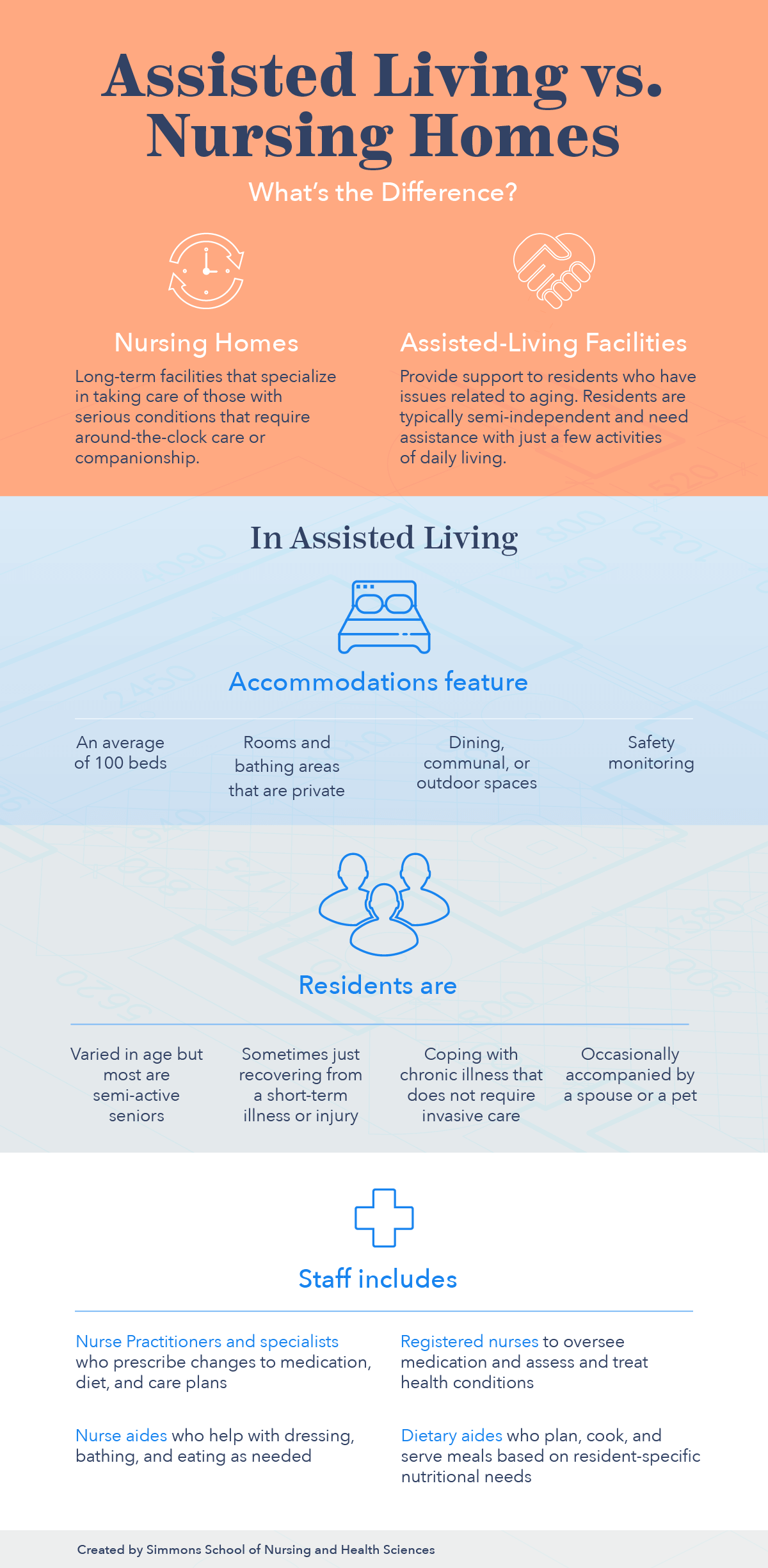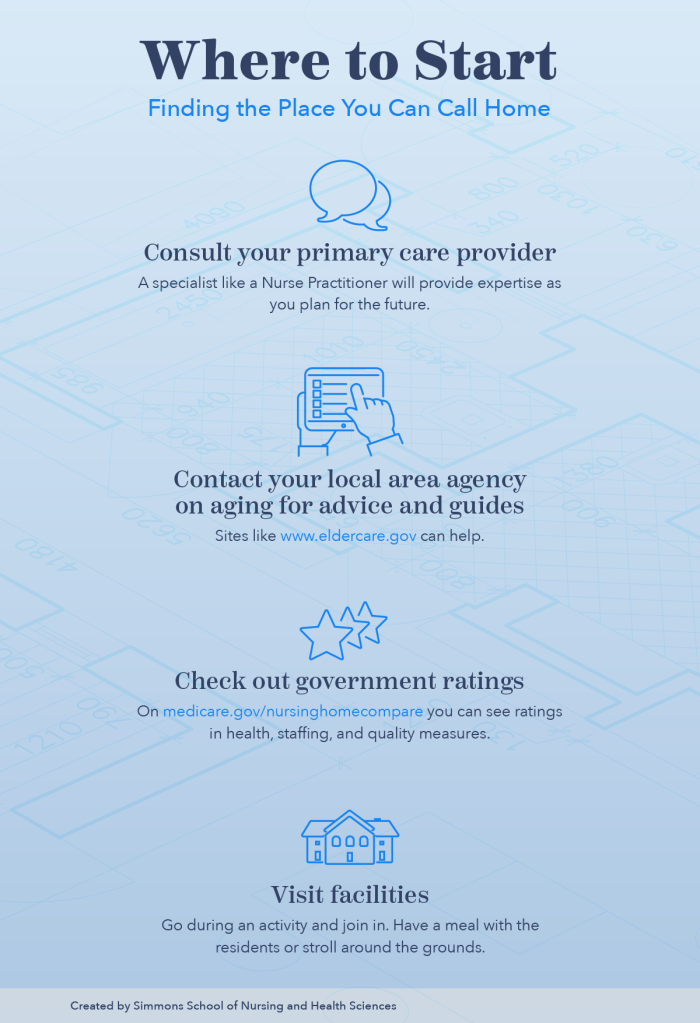As Boomers Age, Clinicians Prepare for the Future of Assisted Living

Aging into our golden years is a privilege we all hope for. As the members of the boomer generation become senior citizens, the American health care system is bracing for a doubling of the elderly population by the year 2030. The spike in the senior demographic will bring with it a need for caregivers, support professionals, housing accommodations, and technology to consider the unique needs of those moving into their elder years.
Limitations in mobility and struggles with day-to-day activities are inevitable byproducts of aging. Past generations have traditionally depended on younger family members to look after their needs as they age. However, as adult children grow up and move away, older parents have to find new support. When aging independently is not feasible, seniors look to assisted living, which offers a home alternative where meals are prepared, medications are monitored, rehabilitation is supervised, and nursing care is readily available.

View the text-only version of this graphic.
The essential functions of assisted living are to provide a safe environment for healing and recovery as well as long-term accommodations. Although there are many benefits to aging in place, contemporary options are proving that assisted living can also be an option for residents to thrive.
Autonomy is a major concern for people entering assisted living. Being put on an institutional schedule — wake times, meal times, bath times, bed times — chafes an independent-minded adult. However, the rigidity of schedules is often created with good intent. It aims to keep residents safe. The future of assisted living balances safety with self-determination.
It’s a value not lost on Nurse Practitioners (NPs), who contribute to these communities with skills to aid rehabilitation, prevent injury, promote healing, and encourage residents to function as independently as possible. By providing patient care throughout the life span, NPs are attuned to ensuring well-being for older individuals who choose to live autonomously.
Laurie Wilson, a nurse educator with 20 years’ experience working with older adults both outside and inside assisted living facilities, said understanding an individual’s unique needs is a primary task for clinicians in this setting.
“What does well-being mean to that person? Is the individual allowed to make choices?” asks Wilson. “Can they choose to sit on the porch or what time they bathe or shower?”
Establishing how patient-residents are empowered to continue their routine of preference is key, Wilson said, as is “frequent care planning that addresses the need for change.”

View the text-only version of this graphic.
The Green House model is reevaluating how to do just that. At Green House, smaller facilities serve as a “house” with 10 to 12 residents, staffed by two Shahbazim (nursing assistants with specialized training). Each person gets a private room and bath, and their ownership of the space shows in decor and arrangement of furniture. Eating options are also available, such as snacks or dining with housemates at the communal table. Placing these choices back in the hands of the patient-residents provides great satisfaction in the ability to express individuality.
But from the point of view of a facility administrator, there are inherent risks: Will residents eat well-balanced meals or go overboard on applesauce? Will they stay up all night and sleep all day? How can it be ensured that residents are staying physically active?
Barry Berman, CEO of Chelsea Jewish Lifecare, explains safety versus lifestyle options this way: “In the Green House model, we do believe that people should make their own choices. When people are making decisions, we make a care plan, educate, document, and then, ultimately, they still have the autonomy. We’ve had our ALS patients go skydiving. They live their life the way they want to live their life. There is risk in everything we do in life, so it is a balance.”
To many experts, a balance of health and happiness in independent older adults includes:
- Being physically active: Participating in physical activity is linked to greater life satisfaction and lower rates of depression.
- Engaging in creative pursuits: Creative outlets build brain power and are adaptive as mobility declines.
- Socializing: Spend time with others. Find a facility that allows you to be social in the ways you enjoyed at home.
Artificial Intelligence (AI) for Aging Independently (AI)
Technology has a large part to play in allowing seniors the dignity of independence and the safety of a watchful eye. The advent of tech extends the possibilities of aging independently and adds potential for privacy in assisted living.
Within the walls of the Green House in Chelsea, technology supports activities of daily living. Residents with extreme mobility limitations are “in control of their environment through automated systems that work the TV, stereo, lights, climate. They don’t need to call for help to change the volume of the music, which means a lot,” Berman said. Maintaining choice and control in the personal sphere keeps the world open. Feeling mastery over an environment makes room for growth and meaning, essential pieces of happiness in later life.
Another technological offering is a digitized pet, which has proven to be a helpful companion for people suffering with dementia. While interacting with a tablet screen, those in need of company engage with the “pet” display, which is operated by a caregiver stationed thousands of miles away. These caregivers interact with the patient using pictures and data uploaded by a loved one. The “pet” makes sure its charge is safe and issues reminders and reports about how the day went.
Additionally, wearable monitors, measuring real-time vital signs have made their way out of hospitals and into people’s wardrobes. For certain cardiac conditions, these monitors are early warning systems that can prevent serious complications.
In this vein, the “I’ve fallen and I can’t get up” button has also received a modern makeover. Labeled mPERS, mobile personal emergency response systems, this is a modern, GPS-enabled device that can be worn as a watch and connected to a cellphone. Its battery life is weeks-long, and it is no longer tethered to a base installed in the home, allowing it to be used anywhere the wearer goes. This innovation puts seniors in control of their own wellness.
While Aging Is Inevitable, Decline Is Not
Social engagement and creative pursuits increase happiness and vitality. Gay Hanna, the executive director of the National Center for Creative Aging, vises older adults that they have reached a place in life where the ground is fertile for engaging in the arts. “The potential of creative expression does not necessarily diminish with age but can be enhanced by it,” Hanna says in her research, published by the Journal of Art for Life.
Whether painting, knitting, or writing a memoir, creative work gives seniors more than a chance for self-expression; it provides an opportunity to learn and socialize.
“There are major benefits to creative engagement and mastering new things. Learning is like pushups for your brain,” Hanna said. “Engaging in creative activity usually involves a social network. Make friends and grow your network (especially intergenerationally) as your network declines by aging.”

View the text-only version of this graphic.
Wilson has counseled many of her patients through finding a new home in assisted living. Her top advice for families and seniors is to make a checklist of priorities. “Whoever makes that checklist, it needs to be resident-focused. What are the things you do in your home that you enjoy? What are the things you might miss if you aren’t home?” Wilson said.
Fortunately, the vast group of people who will soon be requiring assistance with daily living have spent their lives as successful self-advocates, inventing the world they wanted to see — from social justice in their youth to economic prosperity as mature adults. This same spirit guides the development of new ways for people to find comfort and dignity as they age. From innovations that reinvent community housing, to technology that keeps seniors safe without invading privacy, there are many options for better aging. With high-intent attentiveness to residents as individuals, happiness can continue to grow late into the golden years.
Citation for this content: Nursing@Simmons, the Online FNP program from Simmons College


